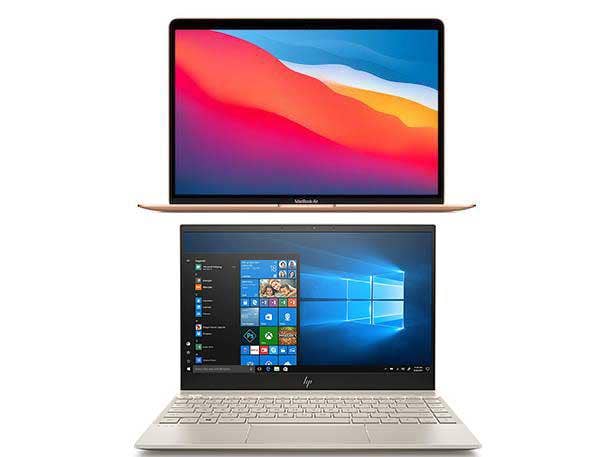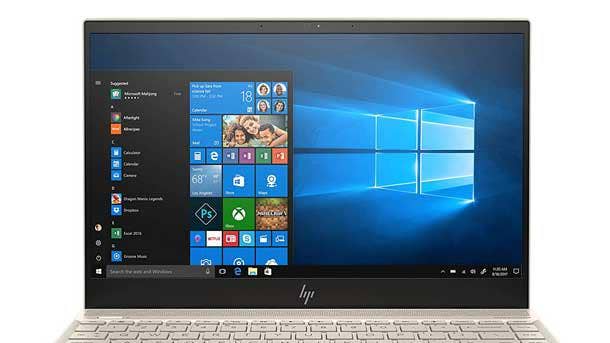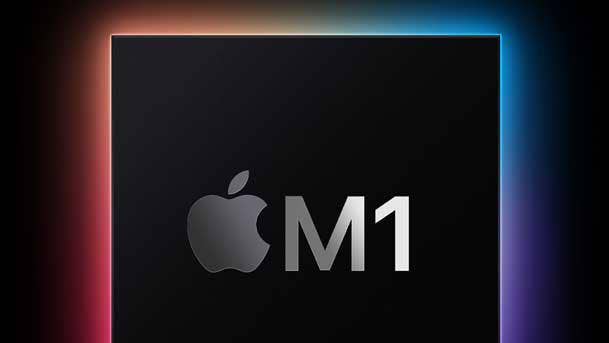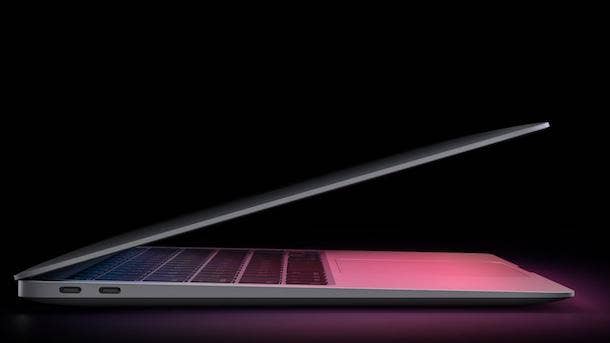Apple MacBook Air (M1) Vs. HP Envy 13 (Intel 11th-Gen)
The CRN Test Center compares Apple’s M1-powered MacBook Air with the latest version of HP’s Envy 13, offering 11th-gen Intel Core processors and a 4K display option.

MacBook Air Vs HP Envy 13
When it comes to finding a laptop that offers top specs for a relatively affordable price, two come immediately to mind: Apple’s new MacBook Air with the M1 chip and HP’s latest Envy 13. Both laptops offer speedy performance, vivid display quality, long battery life and an overall eye-pleasing design. But there are also some big differences between the M1 MacBook Air and the Envy 13. While HP’s use of Intel Core processors in the Envy 13 provides strong performance, Apple’s new M1 processor does offer a speed advantage for the latest MacBook Air—both for CPU and GPU/graphics performance. On the other hand, the HP Envy 13 has some features you won’t find with the M1 MacBook Air, including additional display options such as a touch screen and a 4K display. (And for some buyers, getting a Windows 10 laptop over a notebook running the macOS operating system might be an advantage on its own.)
If your laptop buying decision has come down to a MacBook Air vs Envy 13 comparison, which of the two laptops is a better fit for you? What follows is our comparison of Apple’s MacBook Air (M1) vs HP’s Envy 13 on specs and price.
Display
When it comes to the display, the MacBook Air and Envy 13 have an identical amount of screen space to offer, at 13.3 inches. Apple’s use of its vibrant Retina display technology on the new MacBook Air means that you aren’t likely to have many complaints about image quality. But as mentioned, HP’s Envy 13 has some display options that aren’t available on Apple’s MacBook Air with M1. The Envy 13 offers three different display variations that come with FHD (1,920 x 1,080) resolution. Those consist of a non-touch display; a touch screen option; and a non-touch display with an integrated Sure View privacy screen (to prevent snooping). There’s also a fourth, top-of-the-line display option, which offers stunning 4K resolution (3,840 x 2,160) as well as a touch screen.
The M1 MacBook Air does not go nearly that high on resolution—it features resolution of 2,560 x 1,600. And like all other Macs to date, the notebook does not have a touch screen option.

Portability and Design
Speaking of the display, HP does have one other display-related advantage. The laptop has been designed to have very slim bezels around the screen—resulting in a screen-to-body ratio of 88 percent, according to HP. Along with aesthetics, that design choice also helps to enable a compact size all-around for the latest Envy 13. HP has said the laptop is actually closer to the size of an 11-inch laptop rather than a 13-inch laptop. The MacBook Air continues to feature thicker bezels around the display, and the screen-to-body ratio for the notebook has been reported at 69.5 percent.
Still, even with the small overall size of the HP Envy 13, the MacBook Air is thinner and lighter—though not by a very noticeable amount. The MacBook Air measures 0.63 of an inch thick and weighs 2.8 pounds, while the Envy 13 measures 0.67 of an inch thick and weighs 2.88 pounds.
In terms of materials, both notebooks are made from aluminum. The MacBook Air is available in three colors—gold, silver or space gray—while the Envy 13 is available in silver or gold.

Processor and RAM
The latest MacBook Air is one of the first Macs to feature Apple’s high-performance, Arm-based M1 processor. For the MacBook Air, there are two options for the M1—a version that has a seven-core GPU or a variant with an eight-core GPU. Both versions have an eight-core CPU, with four cores focused on demanding tasks and four cores that enable battery efficiency for less-intensive tasks.
HP’s latest Envy 13 comes equipped with 11th-gen Intel Core processors. Choices include the 11th-gen Core i5 and i7, both of which have four cores. The top-level configuration comes with the Core i7-1165G7.
Benchmark scores point to a performance advantage for the MacBook Air with M1, even when it’s facing off with the top-tier Envy 13. Geekbench 5 scores for Intel’s Core i7-1165G7 and Apple’s M1 show the M1 coming out ahead in both single-core and multi-core tests. The M1’s speed advantage should be most obvious on more-demanding, multi-core tasks, according to the Geekbench 5 results.
On GPU, while the Envy 13 does have an option for discrete graphics, the M1 still has a GPU speed advantage across reported benchmark tests. Standard configurations of the Envy 13 come with Intel Iris Xe graphics, but HP also offers configurations featuring the Nvidia GeForce MX450 with 2 GB of graphics memory. Benchmarks from GFXBench 4.0 show the M1 still beats the GeForce MX450 across a number of different tests of graphics performance.
On RAM, both notebooks offer options for 8 GB or 16 GB of RAM.

Battery Life, Storage and Ports
Thanks to the high-efficiency cores on the M1 chip, the MacBook Air does promise an advantage on battery life. Apple promises 18 hours of battery life on the M1-powered MacBook Air—the longest battery life ever offered for a MacBook Air model. And notably, the M1-powered MacBook Air does not have a fan. HP promises five hours less of battery life, up to 13 hours, for the latest Envy 13.
On storage, the MacBook Air with M1 and Envy 13 both offer options for 256 GB, 512 GB or 1 TB of storage. However, the MacBook Air also offers one additional storage configuration, for a massive 2 TB of storage.
One area where the Envy 13 stands out is on ports options. The notebook offers one Thunderbolt / USB-C port and two USB-A ports (which feature a drop-jaw design, due to the thin form factor of the laptop). The laptop’s USB-A ports also offer a speedy, 5Gbps signaling rate, while the Envy 13 comes with a microSD card reader, as well. The M1 MacBook Air, on the other hand, only includes two ports—and both are USB-C / Thunderbolt.

Price
HP’s Envy 13 comes out as the more affordable laptop in this comparison—at least for the base model. The starting price for the latest Envy 13 is $899.99, with the Intel Core i5 processor. That makes it $100 cheaper than the starting price for the M1-powered MacBook Air, which begins at $999. However, as noted earlier, the Envy 13 with the Core i7 processor will be most comparable to the M1 MacBook Air on performance (though it still doesn’t quite match the M1 on speed). To get the Envy 13 with Core i7, you’ll need to pay another $160. Or, to get both the Core i7 and the discrete Nvidia graphics on the Envy 13, you’ll have to shell out a total of $280 over the base price. In either case, you’ll be paying more for the Envy 13 than for the base-model MacBook Air ($1,060 or $1,180, respectively). Thus, the MacBook Air with M1 may be the better deal for buyers that are seeking above-average performance for their new laptop.
One further note: pricing will vary for the Envy 13 based on the display choice, as well—with an FHD touch screen adding $40 to the price and the 4K touch screen adding $150.